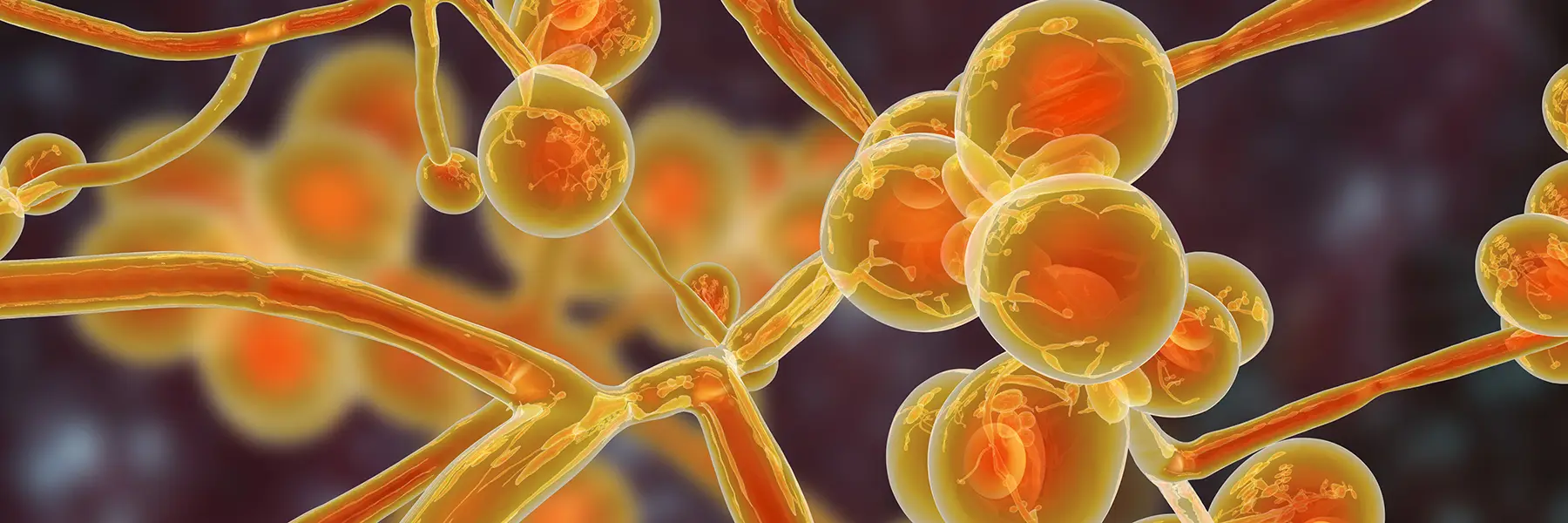Deadly Fungal Infections On the Rise

When you think of killer fungi, poisonous mushrooms growing in forests likely come to mind. Yet, the most lethal are the ones you may not be able to see. In a recent World Health Organization report, the deadliest fungal pathogens are microscopic. Size doesn’t matter in the case of these molds, yeasts, and inhalable spores.
The WHO lists 19 of the most common fungal pathogens and then breaks these into three priority tiers, with a “critical group” topping the dangerous list. These include four fungi pathogens: Cryptococcus neoformans, Aspergillus fumigatus, Candida albicans, and Candida auris.
If those names don’t sound familiar, there’s a reason. Many experts call them the forgotten infectious disease.
“They are everywhere, in the very air you breathe,” says Dushyantha Jayaweera, M.D., FACP, an infectious disease researcher at the University of Miami Health System. “But you don’t think about them until you get sick.”
Actually, most fungi aren’t harmful. It’s estimated that of the more than 150,000 known species, only about 200 can infect humans. Nevertheless, more than 150 million severe fungal infections occur globally every year, according to the National Library of Medicine, and these result in about 1.7 million deaths.
Closer to home, fungal infections are to blame for more than 75,000 U.S. hospitalizations and nearly 9 million outpatient visits yearly, reports the U.S. Centers for Disease Control and Prevention. More than 7,100 people died from fungal diseases in 2021 alone. Direct medical costs are estimated at $6.7 to $7.5 billion yearly.
The numbers may be alarming, but we should put them in context. Dr. Jayaweera calls fungal infections “opportunistic,” with the immunocompromised — those with HIV or a transplanted organ, for example — at the highest risk of dying from an infection. “Most people won’t necessarily develop an infection. They can fight it off,” he adds.
The WHO’s list of deadly fungi follows its 2017 Bacterial Priority Pathogens List. As with that report, the international organization hopes to focus on pathogens that pose the greatest threats to global health. The goal is to encourage clinicians to be on the lookout for these infections and policymakers to direct resources toward dealing with the most invasive fungal pathogens. Infectious disease experts know that fungal infections are on the rise, according to the WHO’s assistant director general of antimicrobial resistance.
Part of the reason is climate change.
“Changing weather patterns allow for some of these fungi to spread” beyond their traditional geographic homes, Dr. Jayaweera explains.
Moreover, these fungal infections are growing more resistant to treatments, partly because of the long-term use of antifungal drugs in high-risk patients. This is true of an extremely virulent strain of Candida auris, a fungus that grows as yeast. It causes candidiasis in humans, and it can invade the bloodstreams of hospitalized patients with weakened immune systems, causing damage to the central nervous system and internal organs. First detected in 2009 in Tokyo, it is a challenge to treat because it’s often misidentified and has proven resistant to multiple drugs.
Fungal infections, both common and rare, are most likely to affect your skin, nails, or lungs. Because they need a warm and moist environment to proliferate, damp public places such as gyms, locker rooms, and showers can increase your risk of developing such common conditions as athlete’s foot. A weakened immune system — caused by stress, smoking, nutritional deficiencies, or an immunodeficiency disorder — heightens the danger.
So what can you do?
Dr. Jayaweera suggests practicing common-sense hygiene. Wash your hands often, keep your skin clean and dry, and avoid using others’ personal care products. Also, keep your immune system in tip-top shape by eating right, exercising often, and sleeping the recommended seven to eight hours.
Just as important, when developing symptoms of an infection, especially a lung infection, make sure to get tested for fungal pathogens. Certain fungi infections display similar symptoms as bacterial infections. Cryptococcus and Aspergillus, for instance, cause pneumonia-like symptoms that can progress into more severe sickness. Early testing to pinpoint the source of the infection cuts down on unnecessary antibiotic use and allows a patient to start antifungal treatment promptly.

Ana Veciana-Suarez, Guest Columnist
Ana is a regular contributor to the University of Miami Health System. She is a renowned journalist and author who has worked at The Miami Herald, The Miami News, and The Palm Beach Post. Visit her website at anavecianasuarez.com or follow @AnaVeciana on Twitter.
